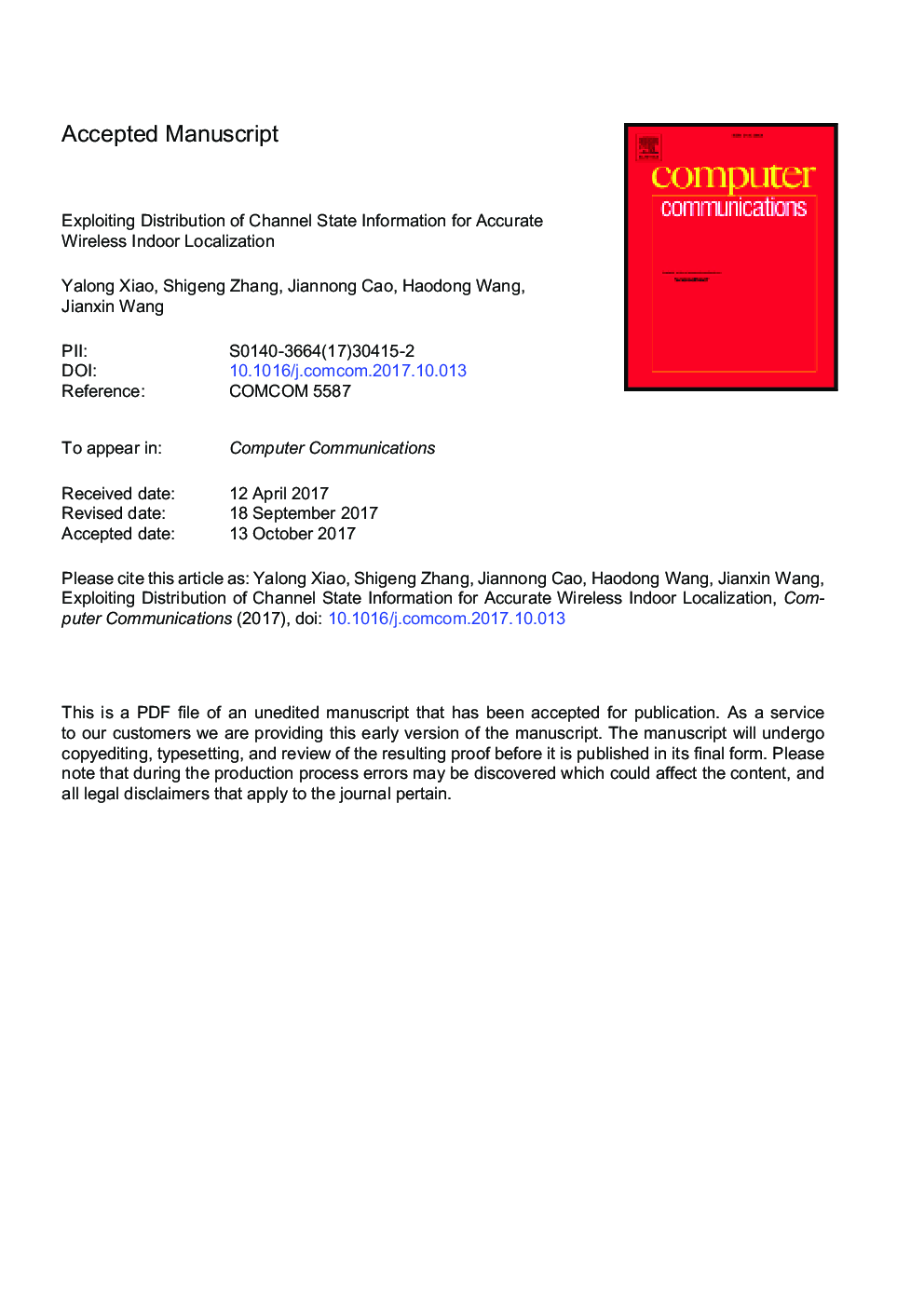| Article ID | Journal | Published Year | Pages | File Type |
|---|---|---|---|---|
| 6880182 | Computer Communications | 2017 | 41 Pages |
Abstract
Wi-Fi fingerprint based wireless indoor localization has received increasing research attention in recent years. Most existing works utilize the received signal strength (RSS) as the fingerprint of a particular position. However, RSS provides only very coarse-grained property of the received signal and thus cannot achieve high localization accuracy. Recently, some works attempt to improve the localization accuracy of Wi-Fi fingerprinting by utilizing the fine-grained channel state information (CSI) that can be obtained on commercial-off-the-shelf (COTS) network interface cards. These studies, however, use only the summation of the received signals to distinguish different positions, which limits their performance gain over the existing RSS-based methods. Our observations show that the distribution of CSI amplitude on individual subcarriers rather than the summation over all subcarriers can provide much finer-grained differentiation among different positions. In this paper, we propose a new localization method that exploits the distribution of CSI as the fingerprint of positions. Our approach makes better use of the frequency diversity with different subcarriers and the spatial diversity with multiple antennas, and thus effectively improves the localization accuracy. The Kullback-Laibler divergence is used to calculate the similarity between different fingerprints, based on which the best matched position is calculated in the localization phase. The experiment results obtained in two typical indoor environments demonstrate that, compared with the state-of-the-art approach, the proposed approach improves localization accuracy by 30%.
Related Topics
Physical Sciences and Engineering
Computer Science
Computer Networks and Communications
Authors
Yalong Xiao, Shigeng Zhang, Jiannong Cao, Haodong Wang, Jianxin Wang,
